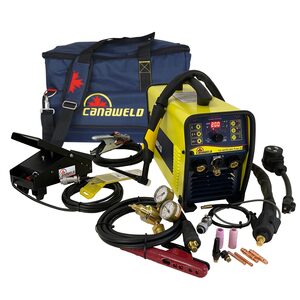Blog Information
- Posted By : cana weld
- Posted On : Jan 25, 2024
- Views : 120
- Category : General
- Description : CAD welding
- Location : Canada
Overview
CAD welding, also known as exothermic welding, has several advantages across sectors. This novel method uses powdered metals to connect metals in a high-temperature reaction. CAD welding is favored for many applications due to its many benefits. CAD welding has several advantages, which we shall discuss here.
- Highly Conductive Joints
Electrical conductivity applications benefit from CAD welding's highly conductive joints. Telecommunications, electrical power networks, and trains need stable and efficient electrical connections, making this a helpful trait.
- Low Resistance
The low resistance of CAD welds is advantageous in electrical applications. CAD welding reduces energy loss in power transmission and distribution systems by providing a low-resistance electrical current route.
- Durability and longevity
CAD welding strengthens seams against corrosion and other environmental variables. The resultant welds last longer than conventional welding procedures, making them suited for infrastructure and industrial installations.
- Versatility
CAD welding can combine copper, aluminum, and many alloys. It works in construction, telecommunications, transportation, and energy because of its adaptability.
- Easy Application
The ease of CAD welding is a plus. It takes little equipment and may be done by beginners. This simplicity of use decreases labor costs and makes CAD welding accessible to more industries and applications.
- An exothermic reaction
CAD welding generates heat via exothermic reactions. This self-contained response removes the need for external heat sources, making CAD welding ideal for remote or difficult locations where conventional welding procedures are impracticable.
- External Power Source Not Required
CAD welding is self-powered, unlike other welding methods. This makes it suitable for different field applications in places with limited or unavailable power sources.
- Low Environmental Impact
CAD welding has a lower environmental effect than conventional welding technologies. The technique produces little emissions, making it ideal for green applications.
- Reduced Fire Risk
CAD welding is exothermic, reducing fire risks. The regulated response keeps heat in the welding region, preventing sparks and flames in delicate areas.
- Increased Safety
The simplicity and predictability of CAD welding improve safety. Reducing the number of variables to manage enhances safety for both seasoned and novice welders by minimizing errors and accidents.
Conclusion
CAD welding is a very effective welding technology with many benefits across sectors. CAD welding solves various problems with its high electrical conductivity, low resistance, durability, simplicity of use, and low environmental effect. As industries change, CAD welding's flexibility and effectiveness make it a popular option for dependable, robust, and cost-effective metal joining solutions.
